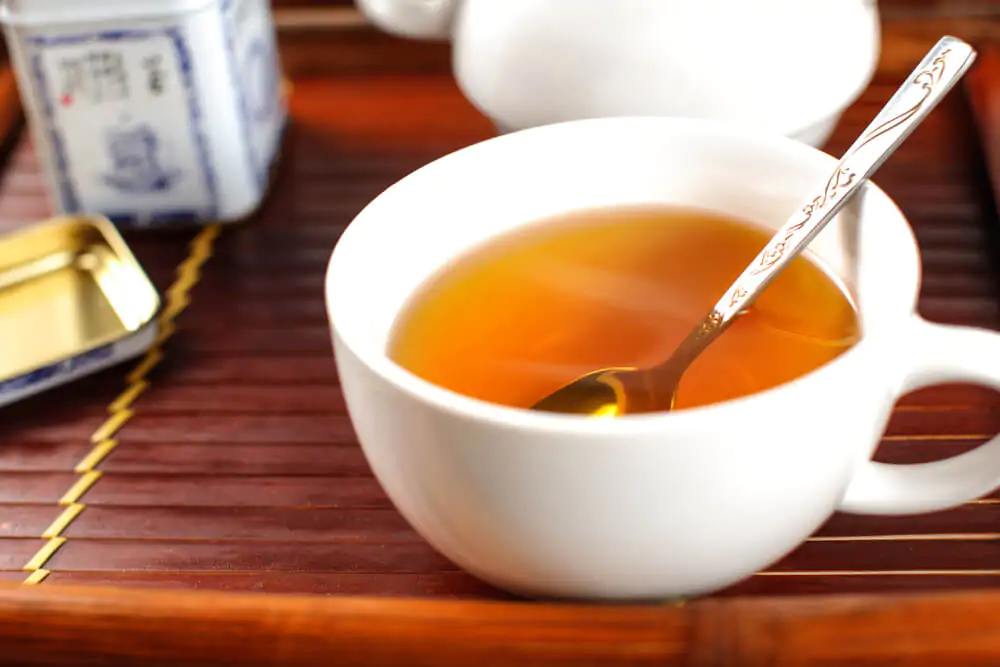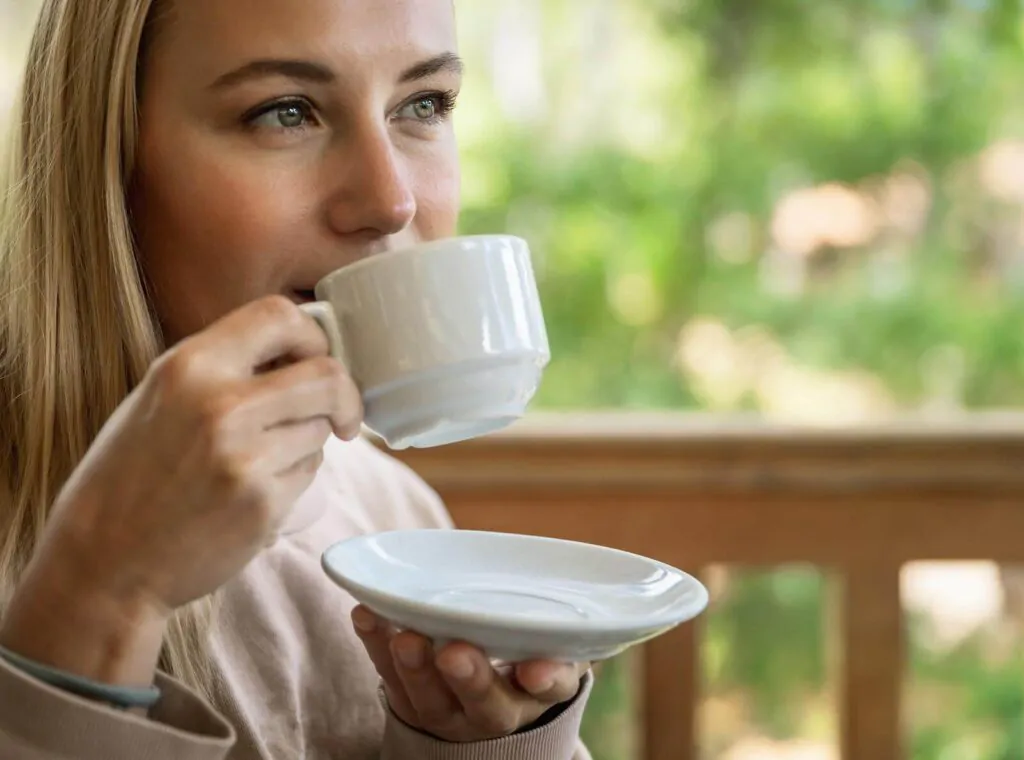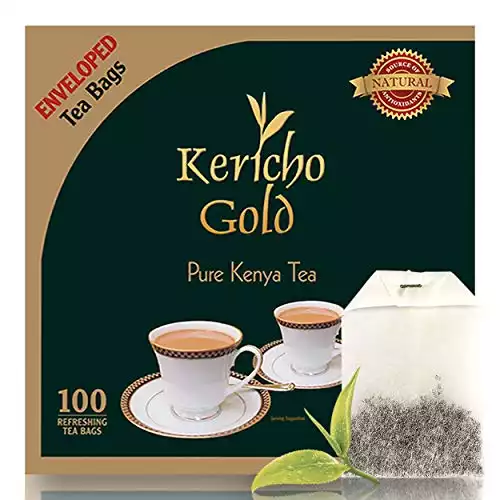Kenyan tea is a type of black tea that is cultivated in Kenya. We’ll talk about how is Kenyan tea made, and share a recipe for Kenyan Tangawizi Chai, a ginger tea with milk.

I have to admit that I only start drinking Kenyan tea recently, but the distinct flavors of the brew inspired me to learn more about this tea from Africa. Now, let me share everything you need to know about Kenyan tea — what it is, how it is made, the most popular recipe, and its health benefits. You might also be interested in these Kenya coffee facts.
What Is Kenyan Tea?
Many people have no idea that Kenya is the third largest tea exporter in the world! China and Sri Lanka are the only countries that produce more tea than Kenya.
Kenyan tea may seem exotic, but it is made from the same tea plant – Camellia sinensis – that is cultivated in other countries such as China and India. The three major varieties that grow in Kenya are Camellia sinensis var. sinensis, Camellia sinensis var. assamica, and Camellia sinensis var. cambodiensis.
Black tea is the most commonly cultivated tea in Kenya. However, as the demand for other types of true teas increases, so do the yields of these Kenyan teas. Kericho Gold is my current favorite Kenyan black tea brand.
- Pure Kenyan black tea
- Rich in antioxidants
- Fair-Trade
- No artificial flavors or coloring
The Unique Qualities Of Kenyan Tea
There are two main factors that distinguish the tea produced in Kenya from other teas. The first one is the soil — in Kenya, you can find red volcanic soil, which is extremely nutrient-dense. This type of soil helps the tea plants to grow quite so well and gives that unique flavor and taste.
The second factor that distinguishes Kenyan tea from other teas is the altitude — many teas from Kenya are cultivated in high elevations. This not only improves the flavor of the tea but also ensures that the tea contains higher levels of antioxidants as well.
What Is Kenyan Tangawizi Chai?
Kenyan Tangawizi Chai is a ginger tea with milk from Kenya. There are a several ways to make the drink.
With the weather varying from cold and rainy to scorching hot, the Kenyan Tangawizi Chai has become a staple in our house, as it can help manage allergies and sore throats.
How To Make Regular Kenyan Tea
Kenyan tea is made like any other type of black tea. You can use either whole leaf tea leaves or tea bags for your brew, but remember that the tea from tea bags may be slightly more bitter.
Heat eight ounces of water (per serving) until it comes to a boil. Then, pour the hot water into your teacup, and add one teaspoon of whole leaf tea leaves or one tea bag. If you prefer a stronger flavor and aroma, add two teaspoons of whole leaf tea leaves or two tea bags.
Let the tea steep for three to five minutes. Make sure to taste the flavor of your tea at regular intervals after three minutes — this will tell you if it has reached the right strength and how long you should steep it the next time you brew a cup of tea.
If you are drinking a higher-quality tea, you may not need to add anything else. If you are making tea using tea bags or prefer a stronger drink, you may need to add something to balance off the bitterness. In this case, add milk or any sweeteners such as sugar.
How To Make Kenyan Tangawizi Chai (Ginger Tea With Milk)

The Kenyan Tangawizi Chai (ginger tea with milk) is so full of flavor, and will have you asking for more!
Ingredients:
- Black tea leaves, Assam tea, or black smoked Lapsang Souchong tea
- Fresh ground ginger
- Milk
- Water
- Sweetener (optional)
Method:
Step 1: Heat The Ingredients
Add the water and ginger to a teapot, and set it on top of the stove over medium heat. Let the water boil before adding the milk. Allow the milk to reach a boil too, but keep an eye on the teapot to ensure it doesn’t boil over.
Step 2: Add The Tea
Reduce the heat to low, and add the black tea leaves. Let this reach a boil as well.
Step 3: Strain
Once the ginger tea has boiled, remove the teapot from the heat and set it aside. Strain the tea leaves into another teapot or a thermos flask.
Step 4: Serve
Pour into teacups and serve hot. Enjoy! You may also be interested in reading our guide on how to make tea in a Moka pot.
Recipe Variation
When making Kenyan Tangawizi Chai, you can use almost any plant-based milk, such as soy, coconut, or almond milk. I prefer a 1:1 milk to water ratio, but you play around with this depending on how creamy your tea tastes.
If you don’t have fresh ginger, ground ginger works. You may also be interested in reading our guide on the best non-dairy alternatives.
Storage
Kenyan Tangawizi Chai should not be refrigerated. Instead, it keeps best when stored in a thermos flask and drank within one day.
Kenyan Tangawizi Chai Health Benefits

Drinking Kenyan Tangawizi Chai has many health benefits, including:
Reduces nausea and vomiting
This tea contains gingerols and shogaols, which help reduce nausea and vomiting symptoms.
Pain relief
This tea has anti-inflammatory properties, which can help relieve pain. According to a recent study, ginger can also reduce menstrual pain.
Weight loss
Research has shown that ginger can help with weight loss by controlling the appetite, suppressing the metabolic process that leads to fat accumulation, and lowering intestinal fat absorption.
Increases testosterone levels
A 2018 study showed that ginger supplementation can enhance testosterone production and improves male fertility. You may also be interested in reading our guide on ginger tea.


